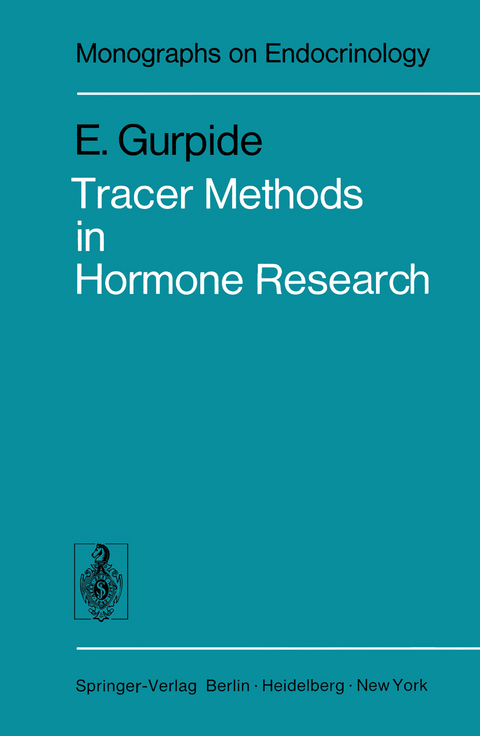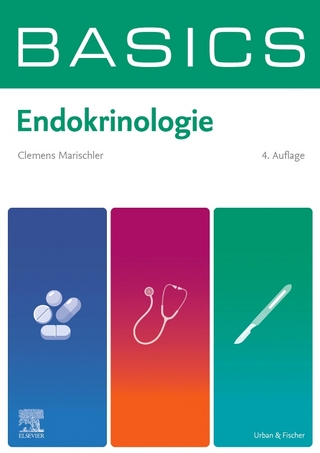
Tracer Methods in Hormone Research
Springer Berlin (Verlag)
9783642808944 (ISBN)
1. Rates in Open System in the Steady State: Definitions and Relations.- A. One Pool Embedded in a Multicompartmental System.- B. Two Related Pools Embedded in a Multicompartmental System.- C. Three Related Pools Embedded in a Multicompartmental System.- D. General Systems of m Related Pools.- 2. Infusion of Tracers at a Constant Rate.- A. Multicompartmental System in Which Only One Pool is Studied.- B. Multicompartmental System in Which Two Pools are Studied.- C. Multicompartmental System in Which Three Pools are Studied.- D. General m-Primary-Pool Subsystem.- 3. Rapid Injection of Tracers.- A. Calculations Based on Areas under Specific Activity Curves.- B. Relationships Between Data Obtained by Rapid Injection and by Constant Infusion of a Tracer.- C. Calculations Based on the Shape of Specific Activity Curves.- D. Determination of Areas and Shapes of Specific Activity Curves.- 4. Tracer Kinetics in Compartmental Models.- Rate Constants (k's).- Fractional Rates (h's).- A. One-Pool System.- B. Two-Pool Systems.- C. Multiple-Pool Systems.- 5. Interpretation of Isotopic Data from Blood-Borne Compounds.- I. Data: Isotopic Steady-State Values or Areas under Concentration Curves.- II. Data: Specific Activity Functions.- III. Calculations Based on Models Involving a Limited Number of Compartments.- IV. Analysis of Systems that are Not at the Steady State.- 6. Rates of Secretion and Metabolism of Hormones Estimated from Specific Activities of Urinary Metabolites.- A. Estimation of Hormone Secretion Rates.- B. Interpretation of Specific Activity Data Obtained from Labeled Urinary Metabolites.- C. Parameters of Metabolism Estimated from Labeled Urinary Metabolites.- D. Labeled Urinary Metabolites in Pregnancy.- E. Comments.- 7. In vitro Tracer Superfusion Experiments.-Superfusion Versus Batch Incubations.- Use of Two Metabolically Related Tracers in Superfusion Experiments.- Model.- Calculation of Rates of Entry of Superfused Tracer into Cells.- Fraction of a Superfused Tracer Returning from the Cells to the Medium.- Fraction of Superfused Tracer Appearing in the Perfusate as a Metabolite.- Conversion Factors.- Rates in the Superfusion Model.- Intracellular Clearance.- A Special Case: Nonsteroidogenic Tissue.- Validation of the Model.- Applications.- References.
| Erscheint lt. Verlag | 12.6.2012 |
|---|---|
| Reihe/Serie | Monographs on Endocrinology |
| Zusatzinfo | XII, 190 p. 1 illus. |
| Verlagsort | Berlin |
| Sprache | englisch |
| Maße | 170 x 244 mm |
| Gewicht | 368 g |
| Themenwelt | Medizinische Fachgebiete ► Innere Medizin ► Endokrinologie |
| Studium ► 2. Studienabschnitt (Klinik) ► Humangenetik | |
| Naturwissenschaften ► Biologie | |
| Schlagworte | Hormone • Steroid • Steroids • termination • tissue |
| ISBN-13 | 9783642808944 / 9783642808944 |
| Zustand | Neuware |
| Informationen gemäß Produktsicherheitsverordnung (GPSR) | |
| Haben Sie eine Frage zum Produkt? |
aus dem Bereich


